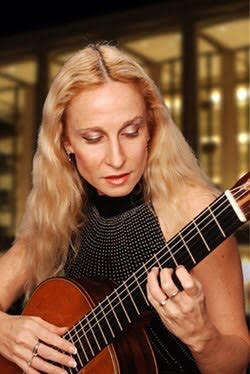
 Christmas, Christian festival celebrating the birth of Jesus. The English term Christmas (“mass on Christ’s day”) is of fairly recent origin. The earlier term Yule may have derived from the Germanic jol or the Anglo-Saxon geol, which referred to the feast of the winter solstice. The corresponding terms in other languages—Navidad in Spanish, Natale in Italian, Noël in French—all probably denote nativity. The German word Weihnachten denotes “hallowed night.” Since the early 20th century, Christmas has also been a secular family holiday, observed by Christians and non-Christians alike, devoid of Christian elements, and marked by an increasingly elaborate exchange of gifts. In this secular Christmas celebration, a mythical figure named Santa Claus plays the pivotal role. Christmas is celebrated on Sunday, December 25, 2022.
Christmas, Christian festival celebrating the birth of Jesus. The English term Christmas (“mass on Christ’s day”) is of fairly recent origin. The earlier term Yule may have derived from the Germanic jol or the Anglo-Saxon geol, which referred to the feast of the winter solstice. The corresponding terms in other languages—Navidad in Spanish, Natale in Italian, Noël in French—all probably denote nativity. The German word Weihnachten denotes “hallowed night.” Since the early 20th century, Christmas has also been a secular family holiday, observed by Christians and non-Christians alike, devoid of Christian elements, and marked by an increasingly elaborate exchange of gifts. In this secular Christmas celebration, a mythical figure named Santa Claus plays the pivotal role. Christmas is celebrated on Sunday, December 25, 2022.
Origin
The early Christian community distinguished between the identification of the date of Jesus’ birth and the liturgical celebration of that event. The actual observance of the day of Jesus’ birth was long in coming. In particular, during the first two centuries of Christianity there was strong opposition to recognizing birthdays of martyrs or, for that matter, of Jesus. Numerous Church Fathers offered sarcastic comments about the pagan custom of celebrating birthdays when, in fact, saints and martyrs should be honoured on the days of their martyrdom—their true “birthdays,” from the church’s perspective.
The precise origin of assigning December 25 as the birth date of Jesus is unclear. The New Testament provides no clues in this regard. December 25 was first identified as the date of Jesus’ birth by Sextus Julius Africanus in 221 and later became the universally accepted date. One widespread explanation of the origin of this date is that December 25 was the Christianizing of the dies solis invicti nati (“day of the birth of the unconquered sun”), a popular holiday in the Roman Empire that celebrated the winter solstice as a symbol of the resurgence of the sun, the casting away of winter and the heralding of the rebirth of spring and summer. Indeed, after December 25 had become widely accepted as the date of Jesus’ birth, Christian writers frequently made the connection between the rebirth of the sun and the birth of the Son. One of the difficulties with this view is that it suggests a nonchalant willingness on the part of the Christian church to appropriate a pagan festival when the early church was so intent on distinguishing itself categorically from pagan beliefs and practices.
A second view suggests that December 25 became the date of Jesus’ birth by a priori reasoning that identified the spring equinox as the date of the creation of the world and the fourth day of creation, when the light was created, as the day of Jesus’ conception (i.e., March 25). December 25, nine months later, then became the date of Jesus’ birth. For a long time the celebration of Jesus’ birth was observed in conjunction with his baptism, celebrated January 6.
Christmas began to be widely celebrated with a specific liturgy in the 9th century but did not attain the liturgical importance of either Good Friday or Easter, the other two major Christian holidays. Roman Catholic churches celebrate the first Christmas mass at midnight, and Protestant churches have increasingly held Christmas candlelight services late on the evening of December 24. A special service of “lessons and carols” intertwines Christmas carols with Scripture readings narrating salvation history from the Fall in the Garden of Eden to the coming of Christ. The service, inaugurated by E.W. Benson and adopted at the University of Cambridge, has become widely popular.
Christmas tree
Christmas tree, an evergreen tree, often a pine, spruce, or fir, decorated with lights and ornaments as a part of Christmas festivities. Christmas trees can be fresh-cut, potted, or artificial and are used as both indoor and outdoor decorations. While the trees are traditionally associated with Christian symbolism, their modern use is largely secular. Many families place presents around an indoor Christmas tree to be opened on Christmas Eve or Christmas Day.
The use of evergreen trees, wreaths, and garlands to symbolize eternal life was a custom of the ancient Egyptians, Chinese, and Hebrews. Tree worship was common among the pagan Europeans and survived their conversion to Christianity in the Scandinavian customs of decorating the house and barn with evergreens at the New Year to scare away the Devil and of setting up a tree for the birds during Christmastime. It survived further in the custom, also observed in Germany, of placing a Yule tree at an entrance or inside the house during the midwinter holidays.
Santa Claus
Santa Claus, legendary figure who is the traditional patron of Christmas in the United States and other countries, bringing gifts to children. His popular image is based on traditions associated with Saint Nicholas, a 4th-century Christian saint. Father Christmas fills the role in many European countries. The Dutch are credited with transporting the legend of Saint Nicholas (Sinterklaas) to New Amsterdam (now New York City), along with the custom of giving gifts and sweets to children on his feast day, December 6. The current depiction of Santa Claus is based on images drawn by cartoonist Thomas Nast for Harper’s Weekly beginning in 1863. Nast’s Santa owed much to the description given in the poem “A Visit from St. Nicholas” (also known as “’Twas the Night Before Christmas”), first published in 1823. The image was further defined by the popular Santa Claus advertisements created for the Coca-Cola Company from 1931 by illustrator Haddon Sundblum. Sundblum’s Santa was a portly white-bearded gentleman dressed in a red suit with a black belt and white fur trim, black boots, and a soft red cap.
Santa Claus is said to live at the North Pole with his wife, where he spends the year making toys with the help of his elves. There he receives letters from children asking for Christmas gifts. On Christmas Eve he loads his sleigh with toys and flies around the world, drawn by eight reindeer, stopping at each child’s house; he slides down the chimney and leaves the gifts, refreshing himself with the milk and cookies left for him by the household’s children.





Be the first to comment